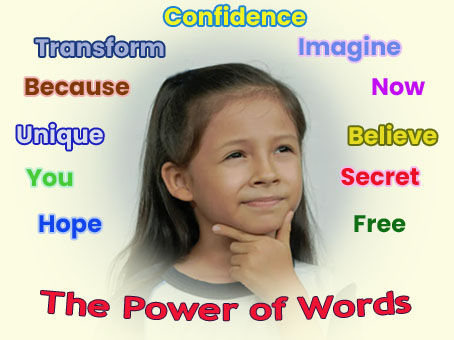The Practice of Perspective Adjustment
- Pathways of Possibility

- Mar 19
- 5 min read

Our responses to anything in life depend greatly upon how we see the situation at hand. Here Don Giuliano explores the matter of perspective and how with practice, it can be adjusted over time to help us see things less personally and more clearly, leading to more considered responses and fewer mindless reactions.
Greater Perspective = Less Reactivity
Many of us live in a hyper-sensitive, polarized state of reactivity that seems to constitute everyday life. Often, we find ourselves reacting to the "heat of the moment" and after a time, when we cool down, we think: "I wish I had said something different or said nothing at all." To become less reactive, there is a need to develop a certain kind of detachment from life’s ups, downs, and perceived challenges. This is not the same as indifference or callousness, but is a practice of perceiving what the case is, without emotion, and responding accordingly.
Some additional benefits of this practice can be:
To facilitate problem solving, as it is nearly impossible to solve a problem when one is upset.
Improved energy management and usage. Instead of wasting energy with a tantrum, one has the energy to be more productive.
Feelings of settlement
Peace of mind
New perceptions about life and the workings of nature. This is a space-creating technology. In that space, new learning is possible.
Improved powers of observation of one’s inner life and the life of others.
Seeing Beyond Dualism

First, it is important to understand about the dualism in life that appears to us as opposites. We tend to label something "opposite" because it is convenient to do so, and according to our experience and observation. But when looked at more deeply, a different picture emerges. For example, consider the state of "wet" or "dry". There is water vapor in the air everywhere on Earth. Even in the air over the Dry Valley area of Antarctica (however, not much water vapor, since that area hasn’t experienced any precipitation in about 2 million years). So, by our observation and experience, when we get out of the shower to "dry off", we are locating a point on a scale of wetness from wet to less wet. The term we use for "dry" is an arbitrary, but useful point of location or convention. Fundamentally, "dry" as some sort of absolute state, which would be the absence of all water molecules in a portion of air, doesn’t exist—at least not naturally.

Here’s another example: Imagine you are out to dinner with a friend, and the food you are sharing could be considered "spicy". Now because you have a high tolerance for spicy food, you may consider the meal "bland" or "mild", while your friend is on fire. Is the food spicy or not? It is neither, for by your experience it is mild, but your friend’s experience would determine that it is hot.
The state of mind that is produced from this process of "perspective adjustment" is the knowing that just because I experience something or observe something to be so, doesn’t make it so. Polarities are treated as absolutes when in fact, the majority are not. And there the debate and arguments start. When we use absolute terms as descriptors such as "it is" or "it is not" (or other forms of the verb "to be"), we can evoke the opposite in another.
Here is one more example related to the above consideration: My wife had made a juice with vegetables and fruit. I tasted a bitterness in it and said "It is bitter" (mistake one: using one’s experience as a criteria description of something). This statement evoked the opposite in her, and she said: "No, it’s not" (mistake two: reactive to mistake one). So, I reframed the statement to be: "My experience of the juice is that there is a taste of bitterness, not overwhelmingly so, but present." She then reframed her experience/description to confirm that she did not taste the bitterness but mentioned that the bitterness could have come from the lime rind. So, an argument was avoided by reframing the description of the experience from the misapplication of an absolute descriptor to a relative one.
The actual practice is to apply this to the everyday challenges one faces. For instance, when one encounters a perceived challenge, calling over to oneself that this would not be considered "hard" for someone with better skill, or a different psychology, or a different character. For them, it would be considered "easy". Therefore, this thing I’m facing is neither "hard" nor "easy"—it simply is what it is. We use these terms in the absolute sense, when they are relative descriptions based upon our perspective.
The Steps
Step One in this practice is to prove to oneself that many things are not actually opposite but are really points on a scale.
Step Two is to remember to call over what the case actually is—that this challenge I’m facing is neither "hard" nor "easy" but simply is.
Step Three is to practice it with as many things and situations as practical.
The Traps
There are two traps in this type of self-instruction that are necessary to be aware of.
Trap One is the delusional idea that one’s opinions are infallible and we can change reality. We all live inside an order of natural laws. For example, no matter what we may think, our bodies run at a certain temperature and if it deviates too far from that, we will be in trouble; or, we are all subjected to the force of gravity and whether we like it or not, if we trip and lose our balance we are going to fall. These are the things we cannot change, but we can change our attitude about what we encounter.
Trap Two is the everything-is-relative mindset. We are all subjected to the same weather; the sky is the same color (unless one is suffering from color blindness); and everyone needs to breathe air to live. What is relative is our unique experience, but that doesn’t make my perception or experience an absolute truth.
The Mindset

It is important to have the mindset of the long-distance runner because this practice will not work if just done once or twice. To achieve the desired results, it must be done many times. So, the attitude most useful to adopt is to be settled with many small attempts, done over a long period of time.
What did you think?
Please send us your comments via our contact form.
We’d like to thank our team of volunteers for generously donating all content you see on Pathways of Possibility to keep it a place of inspiration. If you’d like to support our 501(c)(3) nonprofit, you can help us with a donation that’s affordable to you. Thank you!









